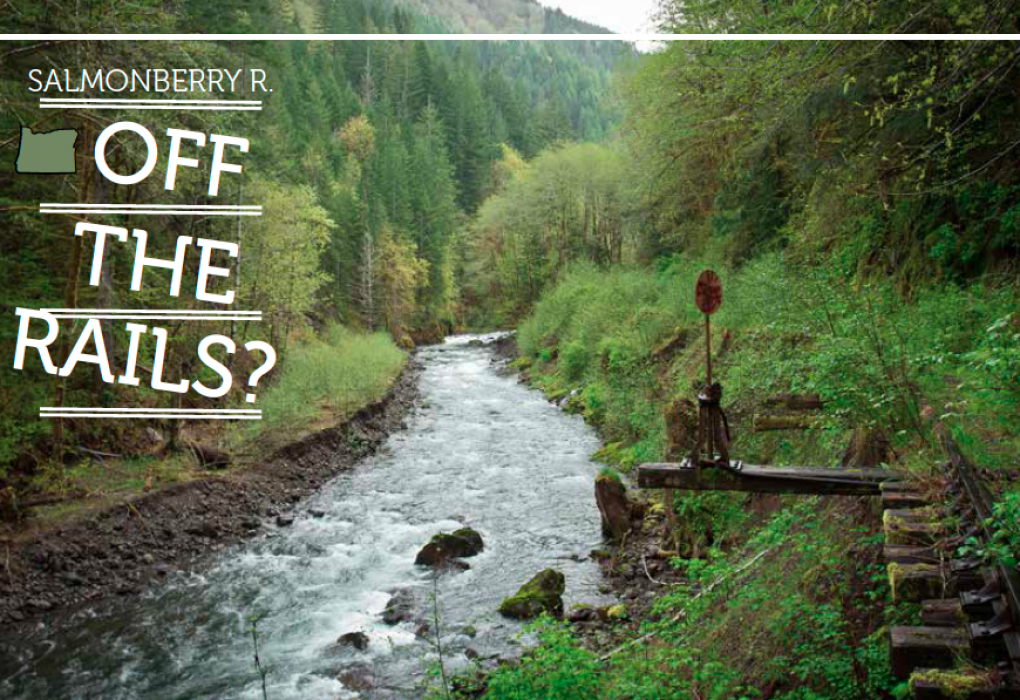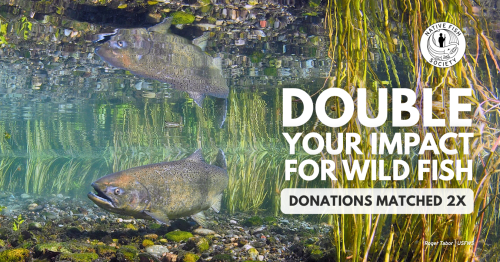2015 Strong Runs - Off the Rails
The Salmonberry Corridor is a proposed 86 mile long “rails and trails” project. If it comes to fruition, it would follow the existing railroad tracks from Tillamook along the coastline through Rockaway and Wheeler, up the Nehalem to the Salmonberry, up the Salmonberry and over the crest of the coast range, and then down into Banks where it would connect with the existing Banks to Vernonia Trail, also a rails to trails conversion. It’s called “rails and trails” rather than “rails to trails” because a trail will run alongside the active rail line on the western end. On the east side, the rail bed will be entirely converted to a trail.
Following the December 2007 storm that destroyed the railroad in the Salmonberry, and the subsequent decision by the Port of Tillamook to not rebuild the rail through the canyon, Cycle Oregon funded a study to examine the feasibility of a rails-trails project. The study was published early in 2013, and the concept planning phase began. Oregon Parks and Recreation and the Department of Forestry led the initial planning. The Oregon Legislature enthusiastically approved the concept and gave the go-ahead for the planning effort. This rare bipartisan kumbaya moment was made possible because they were not asked to fund anything. It is unclear at this point where funding would come from, how much the project would cost, or how long it would take. Project leaders have spoken of it as “multi-generational” development process. I’ve been following this project from the start and have attended most of the meetings. Obviously the Salmonberry River canyon is my main concern. Most of the public comments that I heard spoke to the wild and remote character of the Salmonberry, and the strong desire to keep it that way. Nevertheless, there are people who envision a paved bicycle trail through the canyon. Business leaders in the small rural communities see the possibility of an economic engine. Others see tourist trains running up and down the Salmonberry.
Tourist trains? Really?
Unfortunately, although the Port of Tillamook seems to be out of the railroad business, the Oregon Coast Scenic Railroad has leased some equipment and the use of the right of way from the Port. The Scenic Railroad has operated tourist trains along the coast for a number of years now. They have extended their lease to include the right of way along the Nehalem River and up the Salmonberry as far as Enright, 5 miles above the mouth.
The Scenic Railroad operates outside the Salmonberry Corridor process, and the planning has to accommodate the railroad’s actions. Even so, no one that I spoke to on the project team believed they would actually go up the Salmonberry -- too costly to make the repairs, and too costly to maintain the tracks for the small amount of revenue gained. These skeptics included a former member of the board of the Port of Tillamook, who could not see how the Scenic Railroad could possibly make it work.
We were all taken by surprise in late February 2014 when Native Fish Society member Jeff Wallace called staff member Mark Sherwood and asked if he knew about the railroad construction going on in the Salmonberry. Mark contacted me and I visited the river the next day. Walking upstream I found an excavator crew hard at work a mile upstream repairing a track washout by dropping boulders into the river to shore up the riprap.
This was clearly outside the in-stream work window (August 15-September 15). Communication with the Division of State Lands revealed that the Scenic Railroad failed to obtain permits from the Department of State Lands and the United States Army Corps of Engineers for in-stream work.
The Department of State Lands issued Cease and Desist Orders to the Scenic Railroad on March 11th, 18th, and 28th, ordering the end of the removal-fill activity along the Salmonberry River because the unpermitted activitywas in or near Essential Salmonid Habitat and it created an imminent and substantial risk of injury, loss or damage to the river. The Scenic Railroad and its construction crews ignored the orders. More fill was dumped and tracks were cleared between March 11th and March 27th.
On March 12th 2014, the Scenic Railroad filed suit in federal court claiming the State had no jurisdiction over the activities because they were engaged in interstate rail commerce. The United States Army Corps of Engineers, which has jurisdiction over the fill activity under the Clean Water Act, issued its own Cease and Desist Order on March 26, 2014. Construction was halted approximately 2 miles upstream of the confluence with the Nehalem River after the Army Corps Cease and Desist Order. On April 18, 2014, the Federal District Court rejected the Scenic Railroad’s argument and dismissed the case.
The State had also sought to enforce the Department of State Land’s Cease and Desist Orders in state court. Once the federal case was resolved, the state court entered an order prohibiting further work on the tracks. For now, things are quiet. The Scenic Railroad has given no indication what its next move will be.
If it isn’t clear already, we don’t think permits should be issued that would allow reconstruction as-is. The railroad was built in 1911, and as one can imagine, is lacking in environmental sensitivity. The Salmonberry is naturally constrained by steep valley walls. To facilitate construction and provide a rail bed bench, the river was constrained further by fill and rip rap at multiple locations. This increased water velocity and limited the opportunity for meanders. The Native Fish Society and I believe the Salmonberry should be allowed to reclaim its entire historic channel.
Meanwhile, an initial draft of the Salmonberry Corridor “rail-trail” concept plan was published. This draft proposed a 10 to 14 foot wide hard surfaced “multiuse”trail through the canyon. This trail would be similar to the Banks-Vernonia Trail and would accommodate hikers, bikers, and equestrians. A coalition of fish groups (Native Fish Society, Northwest Steelheaders, Trout Unlimited, Rainland Flycasters, Wild Salmon Center, and Wild Steelhead Coalition) developed a position statement and comments on the plan. We supported the overall concept of using recreation rather than resource extraction to boost local economic development, but opposed a hard surface trail through the canyon and any rail reconstruction in the canyon. We proposed a primitive foot trail for the entire 17-mile stretch through the Salmonberry watershed.
A second draft was published in September, and in this draft a 4 foot wide soft surface trail was proposed for most of the canyon. We sent in comments again, acknowledging and approving the change, but still expressing some concerns. The primary concern centered around the “rails with trails” along the lower 5 miles of the Salmonberry. If the railroad is rebuilt, the trail would be built alongside the tracks, requiring placement of additional fill on the river side of the tracks. We commented that the railroad bed already encroaches on the river, and that further encroachment to facilitate a trail would be unacceptable.
Our Fish Coalition comment letters are available on the NFS website. The final concept was released for public review in November 2014 and we will continue to work to preserve the wild and remote character of the Salmonberry River.

